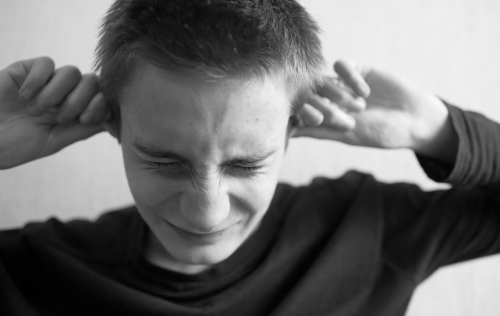
Attention-Deficit/Hyperactivity Disorder (ADHD) is one of the most commonly diagnosed conditions in child and adolescent mental health services. Stimulants, including methylphenidate and amphetamines, are recommended for ADHD treatment.
Whereas methylphenidate is the most prescribed stimulant in many countries, data from private insurance claims show that amphetamines are more common in the United States. Despite meta-analytic evidence that stimulants are among the most efficacious medications in medicine (at least in the short term), the quality of the evidence and the safety of these medications continue to spark intense debate.
Psychosis is a possible adverse event (AE) during stimulant treatment and it may be particularly traumatic for patients and their families.

Limited comparative evidence on the occurrence of psychotic events with methylphenidate or amphetamines is available.
Methods
The study by Moran et al. analysed data from two U.S. national insurance claims databases, including 337,919 youth (aged 13-25) who were prescribed a stimulant for ADHD between 2004 and 2015. New users of methylphenidate or amphetamines were matched using propensity score matching based on a comprehensive set of sociodemographic/psychiatric variables, to minimise bias in the comparison. Psychotic events were defined as a new diagnosis code for psychosis and a prescription for an antipsychotic medication.
Results
- During the study follow-up (median length: 4-5 months), treatment-emergent psychotic events requiring antipsychotic medication within 60 days of onset were infrequent but not rare, occurring in about 1 every 660 patients.
- The rate of psychosis was significantly higher in the amphetamines group (0.21%) than the methylphenidate group (0.10%).
- Median time to psychosis onset was 128 days.

Psychosis rate was significantly higher in the amphetamines than methylphenidate group (0.21% and 0.10%, respectively).
Conclusions
During treatment of ADHD with methylphenidate or amphetamines psychotic events are infrequent but not rare, and are significantly higher with amphetamines than methylphenidate.
Strengths and limitations
The study relied on a large sample. Propensity score matching was used to control for the possible confounding effect of a number of sociodemographic and clinical variables. Observational studies may provide relevant insights on uncommon adverse events in the “real world,” which may be challenging to assess in short-term randomised controlled trials (RCTs). However, even when sophisticated approaches are implemented to address possible bias, as in this study, the absence of randomisation precludes full protection from confounders. Furthermore, due to the nature of the available data, the authors could not assess possible dose effects and the risk of psychosis beyond the study follow-up.
Additionally, the study design was not suitable to establish causality. Of note, a previous large study (20,568 patients) (Man et al, 2016) did not support a causal role of methylphenidate in increasing the risk of psychosis. This study used a self-controlled case series design, whereby the risk of an event is assessed when participants are on and off medication, respectively, to address confounding by indication.
Indeed, it remains unclear if psychosis during stimulant treatment is due to stimulant use per se, patients’ vulnerabilities, or both. According to the vulnerability stress paradigm (Bramness et al., 2012), individuals with low vulnerability would rarely or never develop psychosis, whereas those with high vulnerability would present with psychosis following low doses or even without stimulants.
In this regard, an intriguing finding from post hoc analyses of the Moran et al. study was that the significant difference in the risk of psychosis with methylphenidate vs. amphetamine disappeared when these medications were prescribed by psychiatrists, as opposed to other doctors. A possible interpretation is that psychiatrists may more readily detect prodromal psychotic features that increase the risk of treatment-induced psychosis, tending to avoid amphetamine prescription in these cases.

It remains unclear if psychosis during stimulant treatment is due to stimulant use per se, patients’ vulnerabilities, or both.
Implications for practice
It was beyond the scope of the Moran et al. study to provide evidence on the management of psychotic events during stimulant treatment. Analyses of FDA data showed that in 92% of patients, psychotic symptoms were short-lasting and resolved after stimulant discontinuation. In these cases, current guidelines suggest a cautious rechallenge with stimulants.
Despite uncertainties on the causal mechanisms, the study by Moran and colleagues provides important data on the rate of psychotic events observed in routine practice with youth with ADHD. These figures should prompt awareness and inform daily decision-making between patients/family and prescribers, where a balance needs to be struck between safety and reported effectiveness of stimulants on ADHD symptoms and other important related outcomes, such as reduction in criminality rates.

Prescribers of stimulants to patients with ADHD should monitor the occurrence of psychotic events, which is a rare event in most cases and resolves after stopping the stimulant without adding an antipsychotic.
Conflicts of interest
None.
Links
Primary paper
Moran LV, Ongur D, Hsu J, Castro VM, Perlis RH, Schneeweiss S. Psychosis with Methylphenidate or Amphetamine in Patients with ADHD. N Engl J Med. 2019 Mar 21;380(12):1128-1138. doi: 10.1056/NEJMoa1813751. PubMed PMID: 30893533.
Related Editorial: Cortese S. Psychosis during Attention Deficit-Hyperactivity Disorder Treatment with Stimulants. N Engl J Med. 2019 Mar 21;380(12):1178-1180. doi: 10.1056/NEJMe1900502. PubMed PMID: 30893541.
Other references
Bramness JG, Gundersen OH, Guterstam J et al. Amphetamine-induced psychosis-a separate diagnostic entity or primary psychosis triggered in the vulnerable? BMC Psychiatry 2012;12:221. https://doi.org/10.1186/1471-244X-12-221
Man KK, Coghill D, Chan EW, et al. Methylphenidate and the risk of psychotic disorders and hallucinations in children and adolescents in a large health system. Transl Psychiatry 2016; 6(11):e956
Photo credits
- Photo by Seth Macey on Unsplash

Can you explain the rise of bipolar disorder in children and adolescents in the US since 1995? Isn’t it a result of harmful treatment of children with antidepressants and stimulants?
What are the results of 8 double-blind placebo-controlled studies of children labelled with ADHD?
Psychostimulants result in obsessive-compulsive activities, insomnia, agitation, hypomania, mania, social withdrawal, apathy, depression.
Gillberg (1997), N=62, age 6-11. D-amphetamine. 3 cases of hallucinations.
Firestone (1998), N=41, age 4-6, Methylphenidate: Sad/unhappy 69%. Drowsiness 62%. Uninterested in others 62%.
Mayes (1994), N=69, age 2-13, Methylphenidate: 5.8% increase or emergence of “stereotypical behaviours, including hand-wringing, teeth-grinding and foot-tapping.” 7% severe reactions with one manic-like. Lethargy 18%. Irritability 26%.
Barkley (1990), N=83, age 5-13. Methylphenidate. One case of “excessive speech and disjointed thinking”.
Borcherding (1990), N=46, age 6-12. Methylphenidate, D-amphetamine. 58% developed abnormal movements. 51% develop obsessive-compulsive or perseverative adverse reactions.
Schachar (1997), N=46, age 6-12. Methylphenidate. 10% drop out, 3 due to “sadness and behavioural deterioration, irritability, withdrawal, lethargy, violent behaviour, or rash; 1 due to “withdrawal and mild mania”; 1 due to “withdrawal and dysphoria”.
Castellanos (1997), N=20. Age 6-13, all comorbid for Tourette’s. Methylphenidate, D-amphetamine. 25% developed obsessive adverse reactions. One third experienced worsened tics.
Apart from that, neuro-chemical effects of Methylphenidate (Ritaline) are very similar to that of Cocaine. Cocaine users report that the effect of injected Methylphenidate is almost undistinguishable from that of Cocaine (Volkow, et al. (1995) Archives of General Psychiatry 52, 456-463.
These drugs are also commonly used in the treatment of hypersomnias where there are few or no alternative medications. It is interesting to note that amongst the patient groups, the mental health side of the drugs are often discussed and many patients report at least some, if not many, issues here. However as there is little choice – take them, or take nothing – people accept that poor mental health is something they have to put up with. I do think medical professionals are unaware of the full impact of them, as patients are loathe to speak out in case they lose what little choice they have.